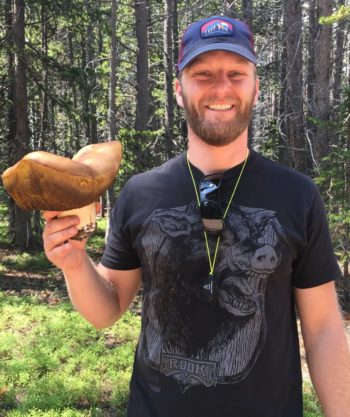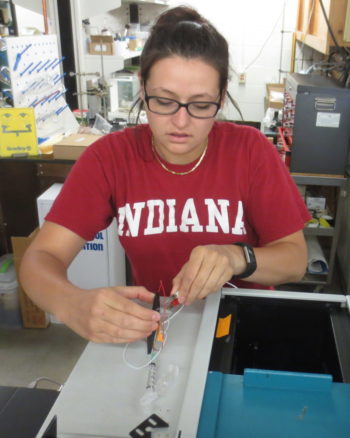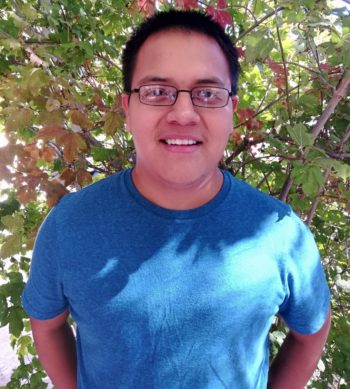Story by Heather Matthews
National Transfer Student Week (Oct. 15-19) is a great opportunity to profile some of CSU’s programs and students for whom “transfer” is a thing.
Historically at four-year universities, there is a lot of focus on the “first-year-four-year” student experience. CSU, while typical in many ways, has started to address transfer student-specific experiences, concerns and issues.
Creating bridges to graduation
Bridges to Baccalaureate (B2B) is a National Institute of Health-funded grant program at CSU that helps transfer students in the sciences who come from Front Range Community College, CSU’s largest transfer feeder school.
These students who have successfully made the transition. Their paths and stories are great testament to the “typical” transfer student experience at CSU — that is, aside from having FRCC and CSU in common, they are each completely unique.

Sean Wright spent several years in the Marine Corps before using his GI Bill to fund his education. He started at FRCC to get back into the swing of the academic world, and took classes in biology and chemistry while also pursuing his love of mycology (the study of mushrooms).
B2B offered him an opportunity to study at CSU in the summer of 2016 in a plant biology lab, where he learned transferrable research lab skills and met CSU faculty and other transfer students.
“It was a great way to ease into CSU and get to learn the layout before actually attending the university,” he said.
A mushrooming educational experience
When he arrived in spring 2017, he found the transition between community college and university to be seamless.
“I wasn’t worried about what credits transferred because of the guidance I got along the way at both schools,” he said. “The university is also extremely veteran-friendly and helped to facilitate a smooth transition into CSU.”
Wright studies fish, wildlife and conservation biology and has an ongoing volunteer gig at Denver’s Botanical Gardens to work in their research labs. Working alongside DBG’s plant science staff, Wright aims to develop a large-scale mushroom database that could be used for identification and knowledge-sharing among scientists and other interested parties.
Wright also juggles family life and home ownership while considering what he’ll do once he graduates from CSU in 2019.
“I truly enjoy the beautiful campus and the culture that CSU has to offer,” he said. “It was a natural choice to come here.”

Lauren Isenhour attended FRCC as a transition from her four-year state school in Texas to CSU – making her a swirler: a common term given to students who change schools more than once. (Three-fourths of transfer students nationwide switch schools multiple times.) She arrived on CSU’s doorstep in summer 2017 with a research position in a chemistry lab.
Finding her way
Isenhour attended FRCC to save money while she got to know the lay of the land in Colorado.
“I expected college to be a challenge,” she says. “This includes prioritizing what’s important to me, and missing out on things that are not. I expected the competition to be brutal, and that scholarships would be hard to come by.
“People underestimate the cost of attending college, but after seeing my brother rack up tremendous debt, I knew that community college would be the best decision for me financially.”
Isenhour was clear about why she wanted to aim for a bachelor’s degree: “I transferred to a four-year school because I wanted to get my bachelor’s of science, get a high-enough paying job to give me the lifestyle that I wanted, and meet people that want to better themselves.”
As a physics major, Isenhour has gotten deeply involved with Pretty Brainy, an organization outside of CSU that aims to get girls interested in science. Earlier this fall, she was the program director for a huge event called MISSion: Innovate, where teams of girls collaborated and brainstormed to create new ideas to help the City of Fort Collins advance its climate action initiatives.
She also participated in a national conference, where she presented at a poster session and networked with professional scientists interested in helping underrepresented students advance in science. It was a life-changing event for her, and the connections she made were invaluable.

Miguel Guerrero is in his first semester at CSU and studying computer science. He started at FRCC in Westminster and initially thought he’d go to CU-Boulder, but when CSU offered him extra scholarships, he transferred to the Fort Collins FRCC campus for his final semester to get some extra experience in C++ programming so he’d be more prepared for CSU’s intensive academic program.
“As a senior in high school, I always knew that I wanted to go to college, but I didn’t know how I was going to get there,” Guerrero said. “I applied to four-year schools and got accepted but I didn’t have the funds.”
FRCC provides a pathway
He loved his experience at the community college and took the maximum amount of credits he could.
“From the very first day of community college, my goal was to transfer,” he said. “My intention was not to get an associate’s (degree), but it was a bonus.”
Guerrero participates in B2B’s Learning Community at CSU, which helps with navigating the transition and focuses on how to become a professional in the world of science.
“One thing that I found a challenge at CSU was getting adjusted to different classes sizes,” he said. “At Front Range, the maximum amount of people in a classroom was about 30. Attending my first class at CSU there were about 200 students. It was a big change. My experience with learning community has been great. They’re a great resource when trying to navigate CSU. It’s good to have that type of support coming in new.”
One thing Guererro has really liked about CSU is that there are more things to do outside of class. CSU’s culture encourages spending more time on campus and interacting with other students, something he hadn’t had the chance to do as much of at FRCC.
“At CSU I’m more involved with clubs and events,” he said.